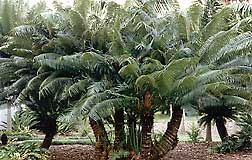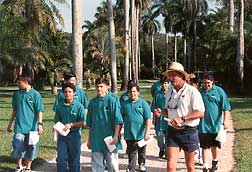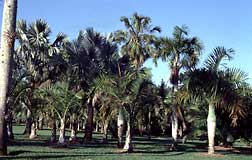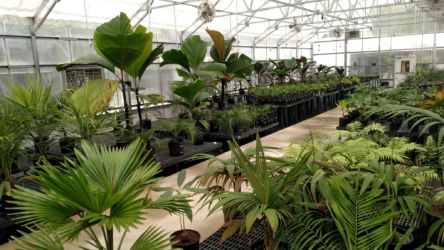About Montgomery Botanical Center
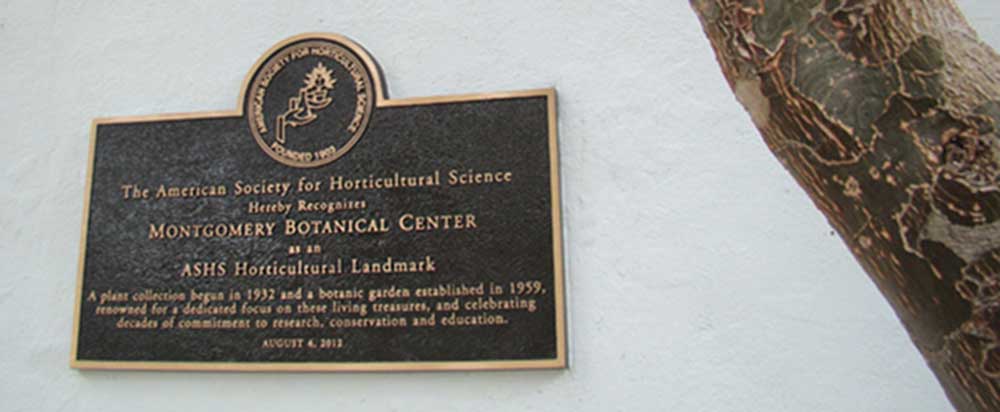
In 2012, Montgomery Botanical Center received recognition as a Horticultural Landmark by the American Society for Horticultural Science.
A Page from South Florida History…
Montgomery Botanical Center is the living legacy of Robert and Nell Montgomery, widely known as the founders of Fairchild Tropical Garden. Housed on their 120-acre Coral Gables estate, it included the largest and finest private collections of palms and cycads in the world. As a living tribute to her late husband, in 1959 Nell created The Montgomery Foundation, Inc.—later renamed the Montgomery Botanical Center—as an independent, nonprofit institution devoted to advancing the science of tropical botany.

The Montgomery Mission
The mission of the Montgomery Botanical Center is to advance science, education, conservation, and horticultural knowledge of tropical plants, emphasizing palms and cycads, and to exemplify excellent botanical garden design. Through this mission, the Montgomery Botanical Center endeavors to make the Montgomery name known and respected throughout the world in the field of plant science.
The Montgomery Botanical Center carries out its mission by collecting seeds from wild populations of palms and cycads from around the world. Montgomery then germinates these seeds in its nursery and grows the resulting plants in population-based, documented, scientific collections in its extensive garden pursuant to excellent botanical garden design. Montgomery fosters and participates in scientific research by collecting and maintaining scientific data on its collections, making its collections and scientific data available to scientists for research purposes, and disseminating this research and data through scientific and popular publications. Montgomery cooperates with many botanical institutions and countries around the world by making its plant collections, knowledge, and expertise available to their scientists, educators, and students. The Montgomery Botanical Center staff also explain the mission and operations to the general public through workshops, lectures, publications, and tours of the plant collections.
The Montgomery Botanical Center’s well-documented, wild-collected, population-based, tropical plant collections are extraordinary in their scientific, educational, and conservation value—and the botanical garden that contains those collections is extraordinary in its design and beauty.
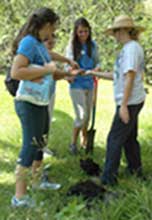
The Montgomery Botanical Center’s plant collections must comply with the following four core principles:
- Plants must have scientific, conservation, and/or educational value;
- Have a reasonable chance of growing on the property;
- Be maintained following exemplary horticultural practices; and
- Be incorporated into the collection in an aesthetically pleasing landscape design.
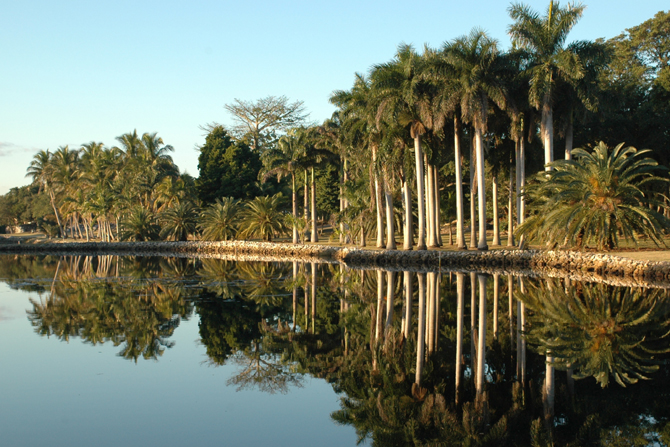
The Montgomery Botanical Center Plant Collections Policy reflects the goals, purpose, and mission of MBC’s collections, which are central to the institution. The Plant Collections Policy was approved and adopted by the MBC Board of Directors in 2005.
Please contact MBC if you have questions, comments, suggestions, or to discuss botanical collections.
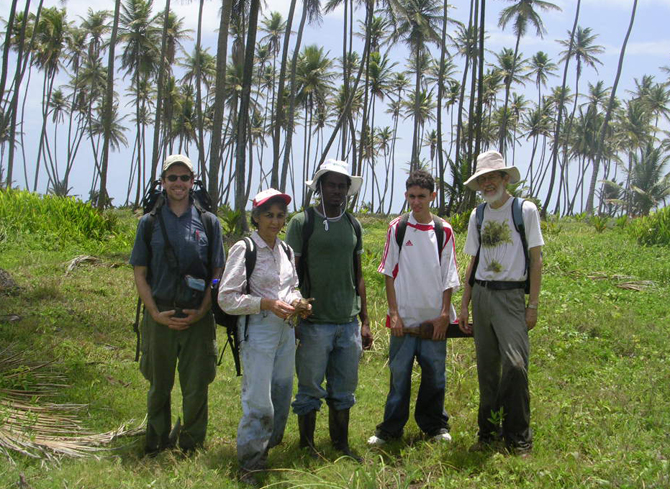
Montgomery Botanical Center conducts international research and conservation fieldwork in an ethical collaborative manner which follows the Convention on Biological Diversity.
Below are links to the MBC policy document which solidifies and codifies the ethic that MBC operates under. This policy was authored by Chad Husby and Patrick Griffith, and unanimously adopted by the MBC Board of Directors on November 14, 2008.
MBC International Fieldwork and Collaboration Policy
MBC Política Internacional de Colaboración y Trabajo de Campo
A Place of Dynamic Resources
To achieve its purpose, the Montgomery Botanical Center’s skilled staff works together as a team in three closely inter-related departments:
Collections Development, Horticulture & Facilities, and Administration.
Under their stewardship are thousands of palms and cycads representing hundreds of species, many of which are threatened or endangered in the wild. To protect and perpetuate the genetic diversity of its collections, Montgomery actively builds its populations of cycads and palms by fielding several officially-sanctioned collecting expeditions each year.
As the plants mature, Montgomery promotes conservation by harvesting (as permitted) the often-rare seeds for distribution to research institutions, botanical gardens, conservatories, and community organizations worldwide through the MBC/FNGLA SeedBank Program, which is the largest of its kind in the U.S.
The varied resources found at Montgomery Botanical Center augment the scientific value of the palm and cycad collections. Primary is the Montgomery database system. Using BG-BASE, details on the life history of each accession are recorded regularly and stored digitally for easy retrieval. ArcGIS tracks the position of each plant.
Researchers, botanical groups, historians, teachers, and students from around the globe come here to tap into Montgomery Botanical Center’s diverse resources. Montgomery is a 24-hour-a-day functioning laboratory and classroom.
The Arthur Montgomery Guesthouse is available for scientists conducting research at Montgomery Botanical Center. MBC’s collections development department is available to support scientific research with current maps of the property and an extensive database of information on the collections. Montgomery can offer security for the scientist to mount long-term experiments with the confidence that experiments will not be disturbed.
The quality of the Montgomery Botanical Center’s palm collection is becoming internationally known, and scientists are recognizing the benefits of working at Montgomery. The collections have been studied by such internationally-known palm scientists as Dr. John Dransfield (Royal Botanic Garden, Kew), Dr. Natalie Uhl (Cornell University), Dr. Andrew Henderson (New York Botanical Garden), Dr. William Baker (RBG Kew), Dr. P. Barry Tomlinson (Harvard University), Dr. Jack Fisher, and Dr. Scott Zona (Florida International University). Those scientists have consulted the material at MBC as a basis for revising reference books on palms, morphological and anatomical studies, physiological studies, growth and development studies, and DNA work.
The Montgomery Botanical Center encourages and promotes all research on its collections and continues to build the scientific quality of its palm and cycad collections.


Researchers visit our collections to strengthen their knowledge of palms and cycads, to begin long-term studies of specific species, to collect material to take back to their laboratories for research or use for teaching. On-site guesthouse accommodations facilitate the research process. If you are interested in undertaking a research project, contact us.
Enhancing the collections in the garden are fauna, flowering trees, distinctive geological features, as well as examples of landscape design excellence.
The Montgomery Archive documents the lives of Robert and Nell Montgomery in Florida, the architectural significance of the original structures on the property, and the history and activities of MBC.
Montgomery Botanical Center is open by appointment to scientists, educators, students, historians, botanical groups, and all others interested in scientific plant collections.

